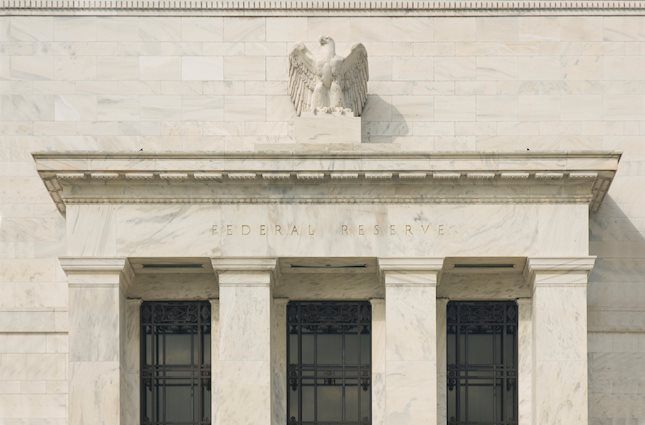To know the impact of the novel coronavirus (Covid-19) on the US - China relations, one must first understand the state that the US – China relationship prior the outbreak. China’s relationship with the United States was already in a rough spot. The rivalry between both countries has gone from one about a specific content in a policy in tactical sense to one concerning the formulation of a policy itself, or the strategic level. As of late 2019, both countries were rapidly developing towards a phase of “strategic co-opetition” with one another, increasingly developing into the aspects of competition and even confrontation.
Following the occurrence of the Covid-19 pandemic, ANBOUND’s research team believes there are couples of things worth taking note of the U.S.-China relationship.
One, on an economic level, the United States and China may decouple from one another “non-strategically” as the pandemic has inadvertently exposed some of the hidden risks in the supply chain. It is now believed that the pandemic could potentially cause globalization to experience a halt or in worst case scenarios, suffer a reversal. There are two reasons to that – First of all, the pandemic has effectively caused the global economy to experience a complete stop. In the words of global economy, it is easy to put the brakes to the economy, but resetting it on the hand, is a huge and arduous journey because the market requires time to recuperate from the shock as well as all supply chains need to be in complete sync with one another in order to ensure the reset can happen smoothly and without interference. This brings us to the second reason, that is the second layout of the supply chain in the post-pandemic. The pandemic has brought many risk factors to the supply chain this time around, particularly in the areas of global distribution and supply chain management. With the outbreak getting finally over in China, the overall focus for many multinational corporations in the country now lies in fine tuning its supply chain so as to ensure they are better equipped to face any risks in the future. Unfortunately, this will only encourage investors to perform further withdrawals of capital from the Chinese market, specifically U.S. capitals. Simply put, the market that serves as an underlying foundation for trade relationship will weaken. As such, the decoupling between both countries is inevitable, and will certainly happen quicker than one realizes.
Two, the “co-opetition” is currently at a critical turning point and it is expected that further “competition (and confrontation)” will be the new norm between U.S. and China, largely because both countries aren’t willing to put aside their major differences to cooperate. While the U.S. may have aided China against Covid-19, the U.S. officials’ remark about how the novel coronavirus may help revive the American industrial scene has upset China greatly. Furthermore, both parties are now pointing fingers at one another given the contagion has escalated into a full-blown pandemic. A high-ranking U.S. administrative official was caught saying something along the line “the pandemic happened because Wuhan did not do a good job at containing it properly early on.” Meanwhile, U.S. President Donald Trump publicly dubbed the novel coronavirus “Chinese Virus”. In response to all the accusations, China’s Foreign Ministry Spokesperson, Zhao Lijian clapped back on social media claiming the virus originated from the U.S. army who came to Wuhan sometime back. It should be noted that ANBOUND does not take side on this. Rather, what we would like to point out is the exchange of verbal blows speaks of a major shift happening between both countries, and it reflects in their trade relationship too. In essence, both governments are foregoing bilateral relations at this point. Truthfully speaking, the U.S. and China were never fully on good terms, though they have always kept their relationship “respectable” so to speak. The current situation, however, is much different and it seems that the “philosophy of struggle” is no longer a form of strategic thought, but a specific policy that is expected to deepen the rift between U.S. and China, thereby leading to further confrontations and weakening the flexibility of foreign policies.
Three, the clash between both countries extends to its social as well as cultural scenes too and decoupling from these two aspects could cause the U.S. and China to enter a “cold war-like confrontation”. The “Thucydides Trap”, or the belief that war arises when a rising power threatens a ruling power, has been a heavily discussed topic within the U.S.-China policy scene in the 21st century. There are considerable economic, cultural and social ties that exist between the two countries that sets it apart from the US-Russia relations, which means a full-scale confrontation is very unlikely to happen. That being said, the fact that things have come to “decoupling” does speak a lot about how things are slowly waning in the U.S. and China, especially on a social and cultural level. At the time of the article’s writing, there already has been many reported cases of xenophobia towards Asians, especially ethnic Chinese living in the American society, with a portion of it involving physical violence. This in turn has caused many in China to respond aggressively and negatively towards the Americans. Despite both country’s communities having legitimate reasons to be upset with one another (like how the Americans and Chinese share differing views on those who wear a mask), ANBOUND believes that most of the negativity arose as result of the fear-arousing pandemic, which has caused both sides to cling onto their ideals of “nationalism” frantically. Clearly, the U.S.-China relation is falling apart at political and social level, all in the name of “nationalism” and such antagonism can bring about many irreconcilable differences.
Four, the pandemic has stirred up yet another problem, and that is the Chinese who have yet to fully assimilate into the American society, overseas Chinese (American Born Chinese in this case) and foreign exchange students included, further threatens the U.S.-China relations. It was previously thought that these group of people would have been key to bridging the gap between both communities and in doing so, promote racial harmony between one another. It is unfortunate that time has shown this is ineffective and have only caused further gaps to appear between them, so much so as leading to a cultural clash, which brings us back to the topic of how it is becoming increasingly harder to resolve any conflicts happening between both communities.
Five, the pandemic has brought a buffer period for the U.S.-China relations, interestingly enough. Even if the U.S.-China trade relations were to take a turn for the worse and become more confrontational, both countries would lack the time and resources to properly sort out any foreign policy-related matters in 2020. For starters, the highlight of the year is centered around the control and prevention of the epidemic as well as the US Presential Election that is quickly becoming a hot topic amongst American politicians, which means one can expect little to no drastic movements or changes this year; Also because it wouldn’t do China any good to instigate any confrontation or conflicts presently. Another thing that we at ANBOUND wish to stress too is that any containment efforts that the U.S. raises against China requires the support of its allies to be effective, though the outcome remains very much uncertain. Why? Because Trump is destroying the very alliance system that is making the country whole and the cracks are beginning to show. Plus, the U.S.’ allies located in the Asia-Pacific and European region are currently in no place to partake in the matter either, as they themselves are having a hard time keeping up with the pandemic too. Given the state of things domestically and internationally, it is expected that the U.S. and China will face further instability that can’t be explained in its relationship, which may push “Phase Two” of the trade agreement to a later date though all of this may very well just be the calm before the storm.
And last but not least, the Belt and Road Initiative or BRI, which after being in the works for six years, is now reaching a key point and is urgently needing structural adjustments. Since the second half of 2019, the U.S. has been actively involving Europe, Japan, India and Austria to build an alternative to the BRI that is expected to span across Eurasia. Meanwhile, China’s domestic economy has begun deviating from its “new normal”, a result of the immense pressure calling for the BRI to undergo major changes though like what we have discussed in our previous articles, this is unlikely to happen as the U.S. and its allies lacks the capacity to do so given what short period of time they have, thus providing the aforementioned “buffer period” that the BRI desperately needs for the time being. Another thing to note, Europe is steadily turning into a red zone for the pandemic, which provides an opportune moment for China’s public diplomacy. If China can change Europe’s perception of itself, then the BRI would have one less challenge to face in the future.
Final analysis conclusion:
The US - China relations have been largely affected by the epidemic as a whole and the bilateral relationship that both governments have worked so hard to keep afloat is now perpetually being replaced by a series of confrontations. What more, such events have led China to make a series of changes towards the country’s strategic direction on a feedback-upon-feedback level, domestically at least. Judging by the progress of things, it’s only a matter of time before both countries will eventually descend into another cold war and the ultimate deciding factor in that lies in whether the U.S. can maintain influence over its allies, which is something China will have play into when responding to US’ containment efforts towards the country.
The information provided herein is derived from publicly available information that we believe to be reliable, but ANBOUND and its affiliates make no express or implied commitment or warranty as to the accuracy and completeness of the quoted information. The contents, views, analysis and conclusions of this article are for reference only and do not represent any inclination. ANBOUND and its affiliates do not accept any liability (whether direct, indirect or incidental) for any third party's acts or omissions in using this article and information. For specific suggestions or for more information on the content of this article, please contact the customer service staff of ANBOUND and its affiliated companies.
Recommended Content
Editors’ Picks

AUD/USD: Next on the downside comes 0.6500
Further gains in the US Dollar kept the price action in commodities and the risk complex depressed on Tuesday, motivating AUD/USD to come close to the rea of the November low near 0.6500.

EUR/USD: No respite to the sell-off ahead of US CPI
The rally in the Greenback remained well and sound for yet another session, weighing on the risk-linked assets and sending EUR/USD to new 2024 lows in the vicinity of 1.0590 prior to key US data releases.

Gold struggles to retain the $2,600 mark
Following the early breakdown of the key $2,600 mark, prices of Gold now manages to regain some composure and reclaim the $2,600 level and beyond amidst the persistent move higher in the US Dollar and the rebound in US yields.

SOL Price Forecast: Solana bulls maintain $250 target as Binance lists ACT and PNUT
Solana price retraced 7% from $225 to $205 on Tuesday, halting a seven-day winning streak that saw SOL become the third-largest cryptocurrency by market capitalization.

Five fundamentals: Fallout from the US election, inflation, and a timely speech from Powell stand out Premium
What a week – the US election lived up to their hype, at least when it comes to market volatility. There is no time to rest, with politics, geopolitics, and economic data promising more volatility ahead.

Best Forex Brokers with Low Spreads
VERIFIED Low spreads are crucial for reducing trading costs. Explore top Forex brokers offering competitive spreads and high leverage. Compare options for EUR/USD, GBP/USD, USD/JPY, and Gold.